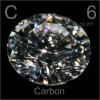Search the Community
Showing results for tags 'downsizing'.
-
Mercedes has been coming out with several new variants using smaller (sub 2.0L) engine for its passenger vehicle lineup of late and there seems to be no end to the trend, in view of tighter emissions and fuel economy requirements by EU and other countries. I have to admit that I am surprised wh...
- 119 replies
-
- 16
-

-

Is 'tiny living' really irrelevant in Singapore?
dailydoseofcoffee posted a blog entry in MyAutoBlog
I discussed the possibility of living in tiny houses in Singapore in an earlier blog post. But as we know, it isn't an option to begin with – no thanks, of course, to our lack of land space. Someone also pointed out that the idea of tiny houses is "romanticised" – which, I don't deny (but hey,...- 4 comments
-
- 2
-

-
- tiny living
- hdbs
-
(and 2 more)
Tagged with:
-
Recently walked past the That CD shop at MBS and it used to have two units there...one a restaurant cum bistro....and the other unit selling cd's.....seems like they are downsizing, as the papers recently mentioned they've closed the branches at Tanglin Mall and Paragon....Seems like most cd shops a...
-
Previously, the only petrol engine available for the Mercedes GLK class SUV is a 3.5-litre V6. But starting from June this year, the European market will be offered with the GLK 250 4MATIC, which is equipped with the 2.0-litre turbocharged four-cylinder borrowed from the A250. It produces 208bhp wit...
- 2 comments
-
- engine
- other news
- (and 9 more)
-

Toyota reported to be changing focus to downsized, turbocharged engines
SYF77 posted a blog entry in MyAutoBlog
Toyota partnered with motorsports specialist GRMN and come up with a turbocharged version of the Vitz (Yaris) at the recent Tokyo Auto Salon. Although the display is a one-off event, Toyota is said to be shifting its focus to downsized, turbocharged gasoline direct-injected (T-GDI) engines....-
- new model
- new technology
- (and 9 more)
-
[extract] Following the footsteps of Ford, Citroen has recently introduced its new PureTech family of three-cylinder petrol engine with capacity of 1.0-litres and 1.2-litres. Unlike Ford's EcoBoost, Citroen's power plants are naturally-aspirated and hence they produce a more modest output rang...
-
- new technology
- engine
- (and 10 more)
-
[extract] Ford is currently working on a 150bhp version of the 3-cylinder 1.0-litre EcoBoost engine. Speaking to Auto Express at the launch of the facelifted Ford Fiesta, EcoBoost chief engineer, Andrew Fraser, said: "I
-
- modifications
- engine
- (and 8 more)
-
Perhaps to prove that their 1.0-litre three-cylinder EcoBoost engine is truly a compact unit, Ford chose to transport it in a hand-carry cabin luggage on its way from Detroit to the Los Angeles Airport. The winner of the 2012 'International Engine of The Year' award claims to occupy only...
-
- engine
- discussions
- (and 11 more)
-
After all the talks regarding a BMW three-cylinder engine, the luxury car maker has released fresh details on this new engine range. It will be available in both petrol and diesel versions and is set to debut in a production model next year. The new engine family has an aluminum block and...
-
- new technology
- engine
- (and 9 more)
-

2013 Ford Mondeo will be equipped with 1.0-litre EcoBoost engine
SYF77 posted a blog entry in MyAutoBlog
[extract] I hope you are sitting tight now as the following news may make you fall off your chair. The new 2013 Ford Mondeo which measures over 4.8m will be offered with the 1.0-litre three-cylinder Ecoboost power plant. The Blue Oval brand has confirmed the news ahead of its-
- new model
- new technology
- (and 9 more)
-

Aston Martin looking at 4 or 3-cylinder engines to meet emission standards
SYF77 posted a blog entry in MyAutoBlog
[extract] In the quest to meet the tightening emission regulations, Aston Martin CEO, Dr Ulrich Bez, hinted at the possibility of four or even three-cylinder engines as long as the product does not undermine the brand-
- engine
- discussions
- (and 8 more)
-
Recently, I read from an advertisement on The Straits Times that the C-Class C180 Blue Efficiency sedan will receive a new 1.6-litre turbocharged engine. Erm, but don't we already have a 1.6-litre C-Class sedan in the form of the supercharged C180 Kompressor Blue Efficiency ? This spurred me to dem...
-
[extract] Recently, Ford introduced the 1.0L Ecoboost 3-cylinder engine in the Ford Focus. If you are surprised at how a 3-cylinder lump can power a car the size of a Focus, you may fall off the chair to learn that the new BMW 3 Series could get 3-cylinder engines in the next couple of years accord...
- 1 comment
-
- new technology
- engine
- (and 7 more)
-
[extract] Ford is taking the concept of downsizing to a whole new level with the introduction of the company
- 1 comment
-
- new technology
- engine
- (and 10 more)
-
If you are thinking of owning an all-new 2012 Lexus GS saloon but wish to pay less road tax, here is your chance. The new entry-level model for the GS saloon has been revealed in the form of the GS 250, equipped with a 209 hp 2.5-liter V6 Dual VVT-i engine featuring D-4S direct port injection. The b...
-
[extract] Ford CEO Allan Mulally revealed the 1.0 liter 3-cylinder EcoBoost engine recently at the official launch in Cologne, Germany. Mulally believes the new engine will be one of Ford
-
- engine
- new technology
- (and 6 more)
-
[extract] GM
-
- engine
- new technology
- (and 7 more)
-
Ford is adding a new engine to its global vehicle lineups that has the same displacement as most water bottles - 1 liter. The three cylinder Ecoboost engine is the smallest engine Ford has ever built. Ford first mentioned the engine with the Start concept car when it was rolled out at the Beijing...
-
- new technology
- engine
-
(and 6 more)
Tagged with:
-
BMW is designing its upcoming family of diesel and petrol engines to share more standardized parts. These new engines, in 1.5 liter, 2.0 liter and 3.0 liter capacities, will share a common engine block design and other parts. "Our goal is to have 60 percent of components shared between engines based...
-
- new technology
- engine
-
(and 5 more)
Tagged with:
-
Could it be true? http://www.autoincar.com/next-generation-h...s-than-1695-mm/
-
I changed my profile 55 tyres to profile 50 tires.I know that speedo readings would not be accurate,BUT would it under or overstate my actual speed or mileage readings?If so by how much is the difference?Say if my speedo shows 100km/hr,wat would be my actual speed? Likewise when my odometer read...
- 11 replies
-
- Downsizing
- tyres
-
(and 3 more)
Tagged with:

